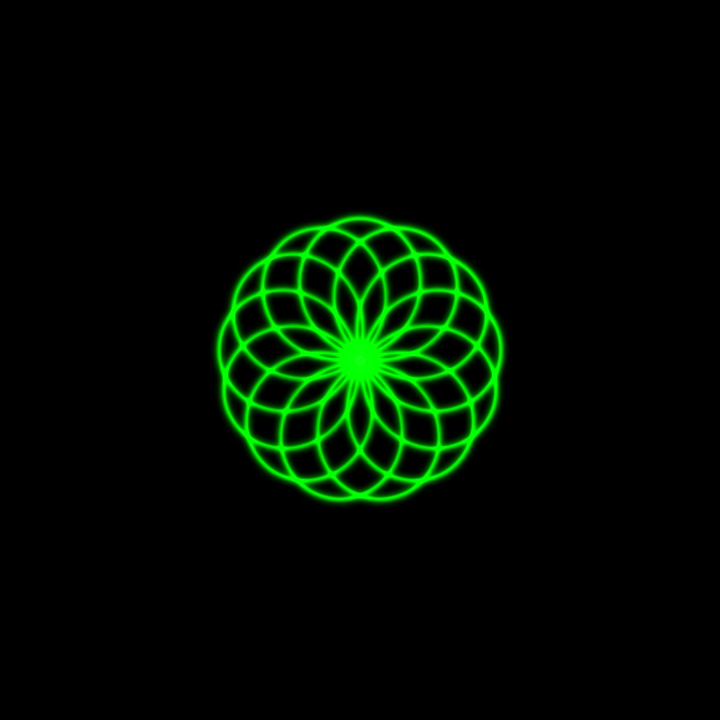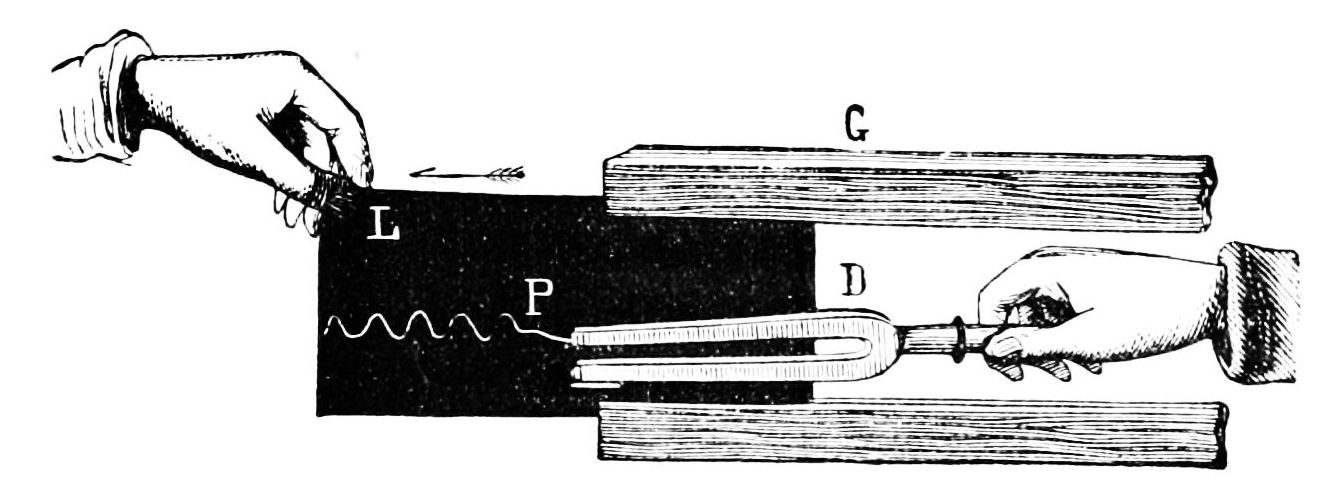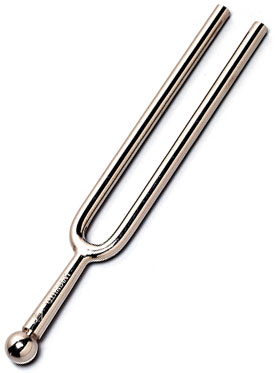Oscilloscope Music
An interactive article by Corentin Forler —
By using oscilloscopes, devices that can show electrical signals on a screen, musicians have been able to draw shapes with sounds.
With this interactive article, you will be able to explore and understand this ingenious way of drawing shapes by studying a particular genre of music called oscilloscope music.

Oscillators
In the physical realm, a sound is produced by the vibration of a source. Musical instruments are sources, they produce vibrations that can travel through the air before reaching a receiver such as a microphone or an ear-drum.
A simple sound source is the tuning fork. When it is struck, it resonates at a specific frequency, which creates a sound.
This vibration can also be called an oscillation, and the tuning fork is a simple oscillator.

Click on the audio below to play the sound of a tuning fork. You can also click on the picture of the tuning fork to play the sound.

Sine waves
The sound created by a tuning fork is a sine wave. Most of the time, tuning forks are used to tune musical instruments, and resonate at a frequency of 440 Hertz.Synthesizers: the birth of new sounds
In the world of microphones and computers, a sound is an electrical signal moving through wires, just like it can be transmitted by the air to an ear.
The transformation of sounds into electrical signals is what has enabled many new ways of creating, recording, transmitting and experiencing sounds: microphones, loudspeakers, telephones, radios, electric guitars, synthesizers, and computers.
Different physical instruments can produce the same note but still sound different, because they have different timbres. With synthesizers, musicians were able to create completely new sounds, without the need of a physical source of vibrations.
The timbre of a simple synthesizer can be any waveform, also called oscillators, or combination of waveforms. The most simple waveforms are:
- The wave
- The wave
- The wave
- The wave
To hear them, you can use the selection menu called Waveform or simply click on them in the list above.
While the a basic synthesizer may sound simple, it still can be used just like any other instruments to create music. Below is an example of a major chord being played using the simple waveforms introduced above. You can change the values as you wish to create new chords, just click on the triangle ▶︎ to open the menu of each oscillator.
Stereo audio and oscilloscopes
A sound or music is said to be stereo when it is made up of two distinct signals, also called channels, one for the left ear and one for the right ear. This is where we can start to understand the origins of oscilloscope music.
Indeed, oscilloscopes are used to show electrical signals on a screen, and they can be controlled by two signals at the same time, one for the x axis and one for the y axis. Those two signals control the position of the dot on the screen, but because this dot moves really fast, it is seen as a single continunous line.
Oscilloscope music merges the XY mode of oscilloscopes with the world of stereo audio by controlling the x axis with the left audio channel, and the y axis with the right channel.
Here is an example of a simple Lissajous figure being created using two audio signals. The left signal is a sine wave of a given frequency, and the right signal is a cosine wave (a sine wave shifted a little bit in time) of twice the frequency.
Notice how the shape changes depending on the frequency and volume of the two signals. Try frequencies where one is a multiple of the other, such as , , , , or even when they are .
Experimenting with waves
Here you can experiment with sums of multiple waves.
Notice how the shape changes depending on the frequency, volume and phase of the signals. Try the following examples: , or , or , or , or even a , or a , or a .